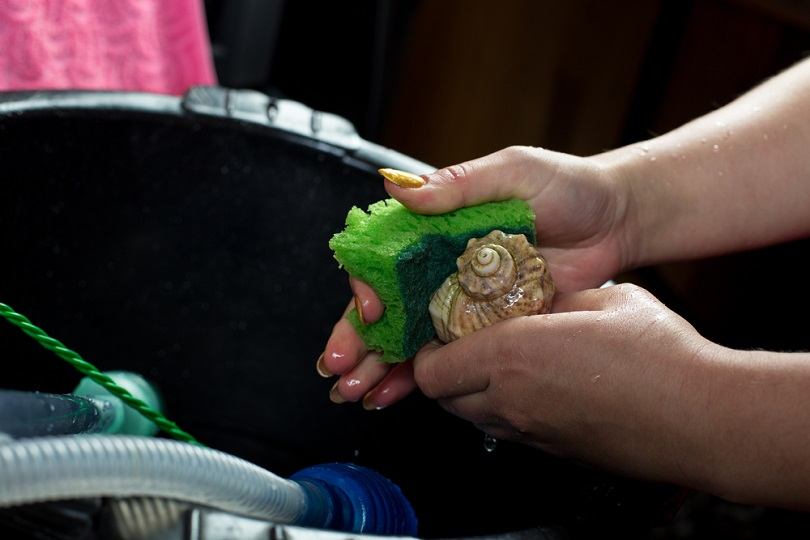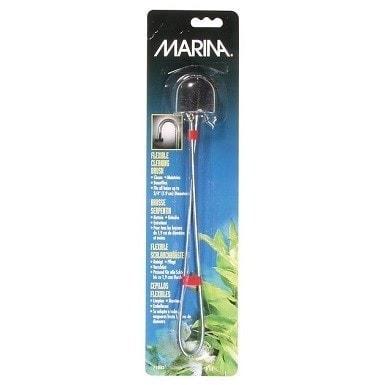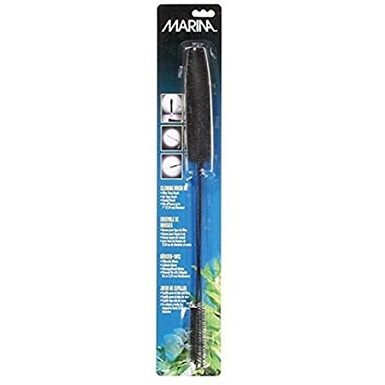How To Clean Plastic Plants In Fish Tank

It can exist frustrating to see the dreaded algae or opportunistic debris take over your plastic aquarium plants. Luckily, in that location is a solution to easily have care of this trouble!
Plastic aquarium plant decorations—also known as artificial plants—come in a diverseness of colors and styles to suit your personal preferences. Some may await faux and very brightly colored, or some may look much more realistic. Virtually aquarists volition go on several plastic plants in their aquarium to provide shelter for tank inhabitants and surface area for beneficial bacteria to grow on. Plus, adding a dash of color.
A bonus to plastic plants is that they are relatively inexpensive and widely available at most pet stores. Dissimilar their alive counterparts, plastic aquarium plants are fairly like shooting fish in a barrel to clean.

How to Determine When Should Y'all Make clean Your Plastic Aquarium Plants
Aquarium décor will require a good cleaning when a plant is covered in unwanted algae growth. Likewise, y'all'll want to clean the plants when removing a ornamentation, cleaning the tank, or preparing them for storage. Be careful not clean also many decorations at once, equally the surface holds an establishment of natural nitrifying bacteria.

Annotation: It is NOT endorsed to clean aquarium decorations with harsh household chemicals such as bleach solutions, as it may fade the plant'due south colors and release the chemicals back into the water via leftover residual.
Before You Start
Have a saucepan, medical-form gloves, a safe cleaning agent (optional), a towel, and an surface area where you tin can easily clean up spilled water.

A 7-Footstep Tutorial for Cleaning Your Plastic Aquarium Plants:
1. Removal
Remove all the plastic plants you desire to clean, and it is easier to remove the plants during a water change when the water level is low enough for y'all to remove the plants from the substrate. You can also use a net to hoist the plant up till your mitt tin reach it and pull the found out.
2. Rinsing
Once yous have removed the plants, information technology is time to rinse the plants under lukewarm tap water. Identify the plants under the tap and swish the plants through the water to make sure the whole surface is wet. Debris particles should begin to loosen from the plants and launder off, except for algae.
3. Soaking

In one case you have rinsed the droppings off the plants, fill a bucket with 60% boiled h2o and 40% cold tap h2o. A rubber cleaning agent should be added such as the API aquarium prophylactic cleaning spray, which can be practical to the surface of the plant. Yous can even add together pure apple cider vinegar with the ratio of ane teaspoon per 5 liters. Submerge the plants in the saucepan and soak them for 20 minutes. This will soften the debris or algae making it easier to clean. A cleaning agent is not necessary if you do not want to expose your inhabitants to whatsoever leftover remainder, boiling h2o should suffice.
4. Scrubbing

Take an quondam toothbrush or an aquarium scrubbing brush such as the Marina cleaning castor or the Marina brush kit. Begin scrubbing the surface of the leaves, stems, and base of operations to remove dirt and algae.
5. Washing

Empty the saucepan of soiled water and refill with cold tap water. Lightly run your fingers over the plant'due south surface to remove cleaning residue. Let the newly cleaned plants soak for 10 minutes.
half-dozen. Rinse and dry out
Thoroughly rinse the plants nether cold h2o for several minutes and place them on a make clean towel or surface in the sun for 20 to 30 minutes. Have the clean towel and wipe the plants downwards till they are completely dry.
7. Return the plants to the aquarium

Determination
Once you have completed the steps and your plants practise non accept whatever remaining cleaning agent rest (the plant should not have a smell), your plants have been successfully cleaned! You lot tin and then add together the plants back to the aquarium or set up them aside for storage. If the plastic plants regularly get muddy, you should wait further into what is causing this problem so you can deter this from happening again.
Featured image credit: Sergiy Akhundov, Shutterstock
Source: https://www.hepper.com/how-to-clean-plastic-aquarium-plants/

0 Response to "How To Clean Plastic Plants In Fish Tank"
Post a Comment